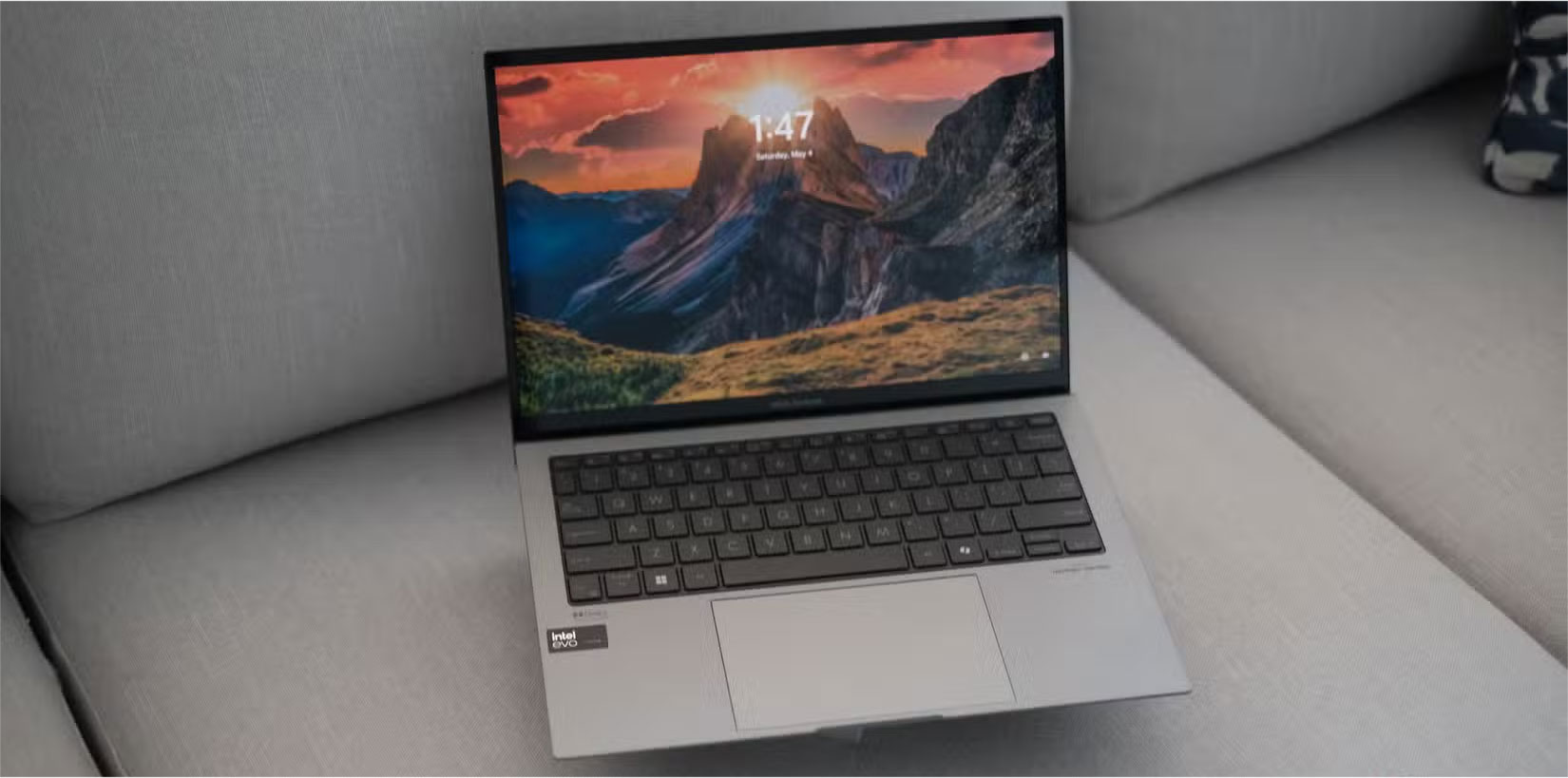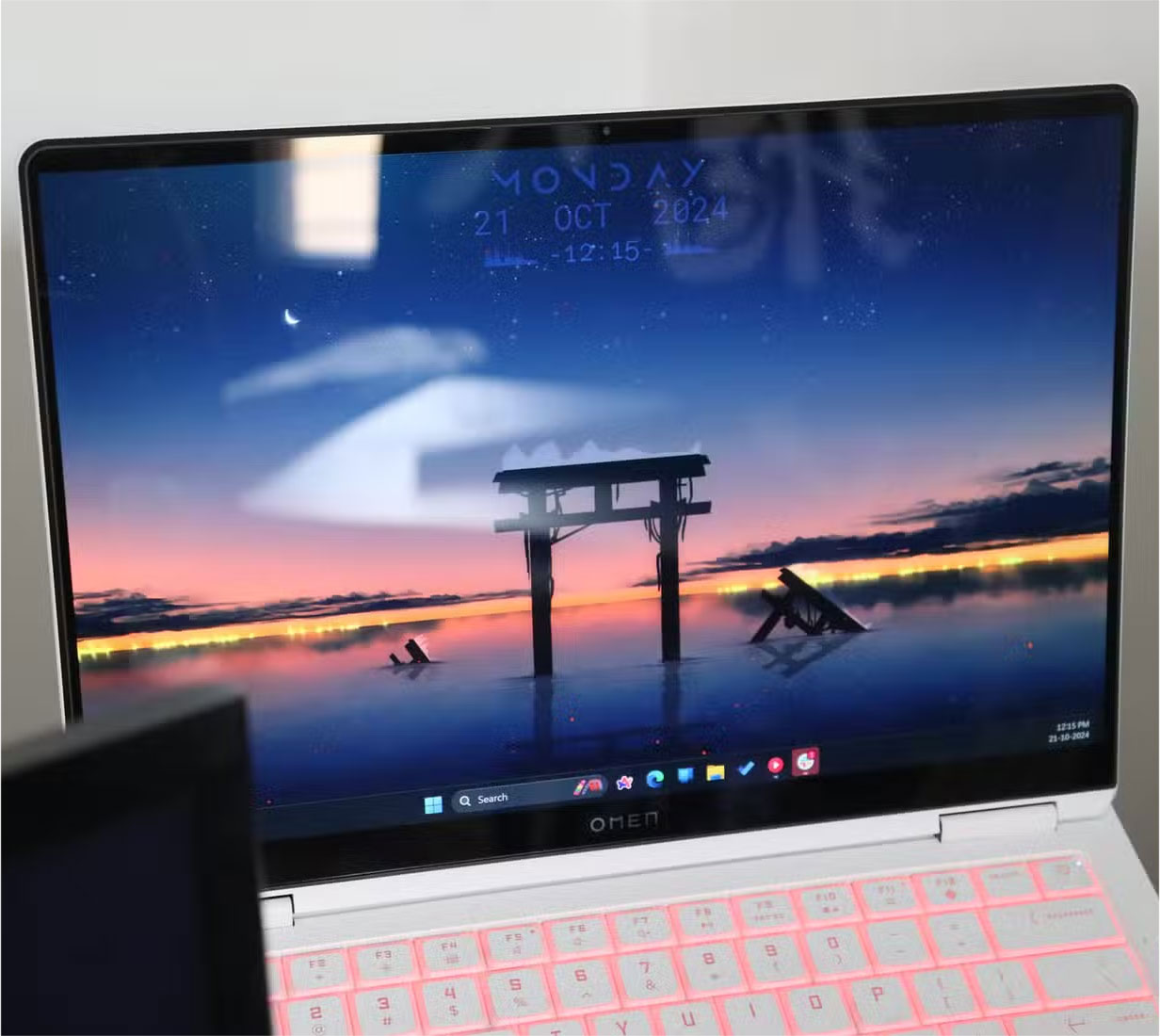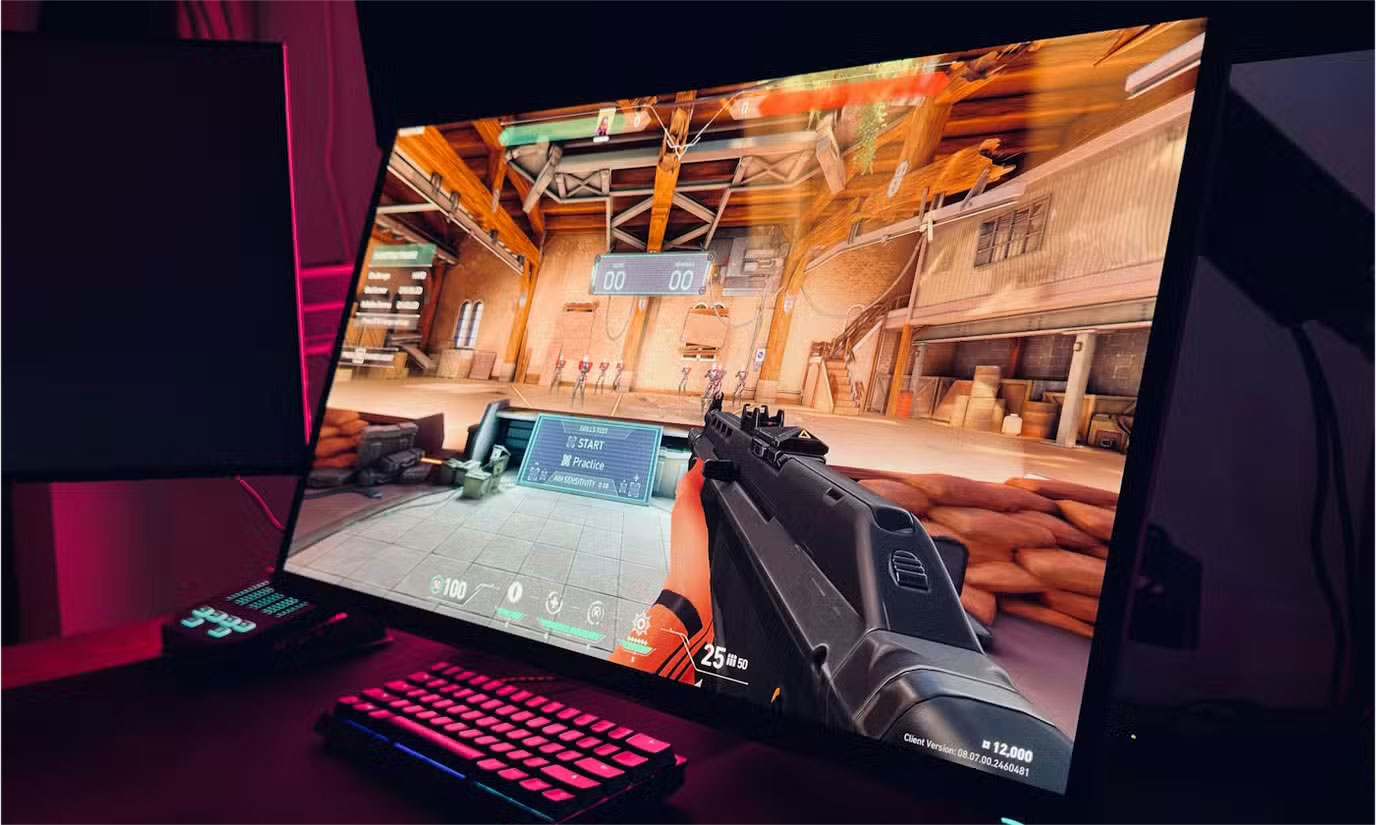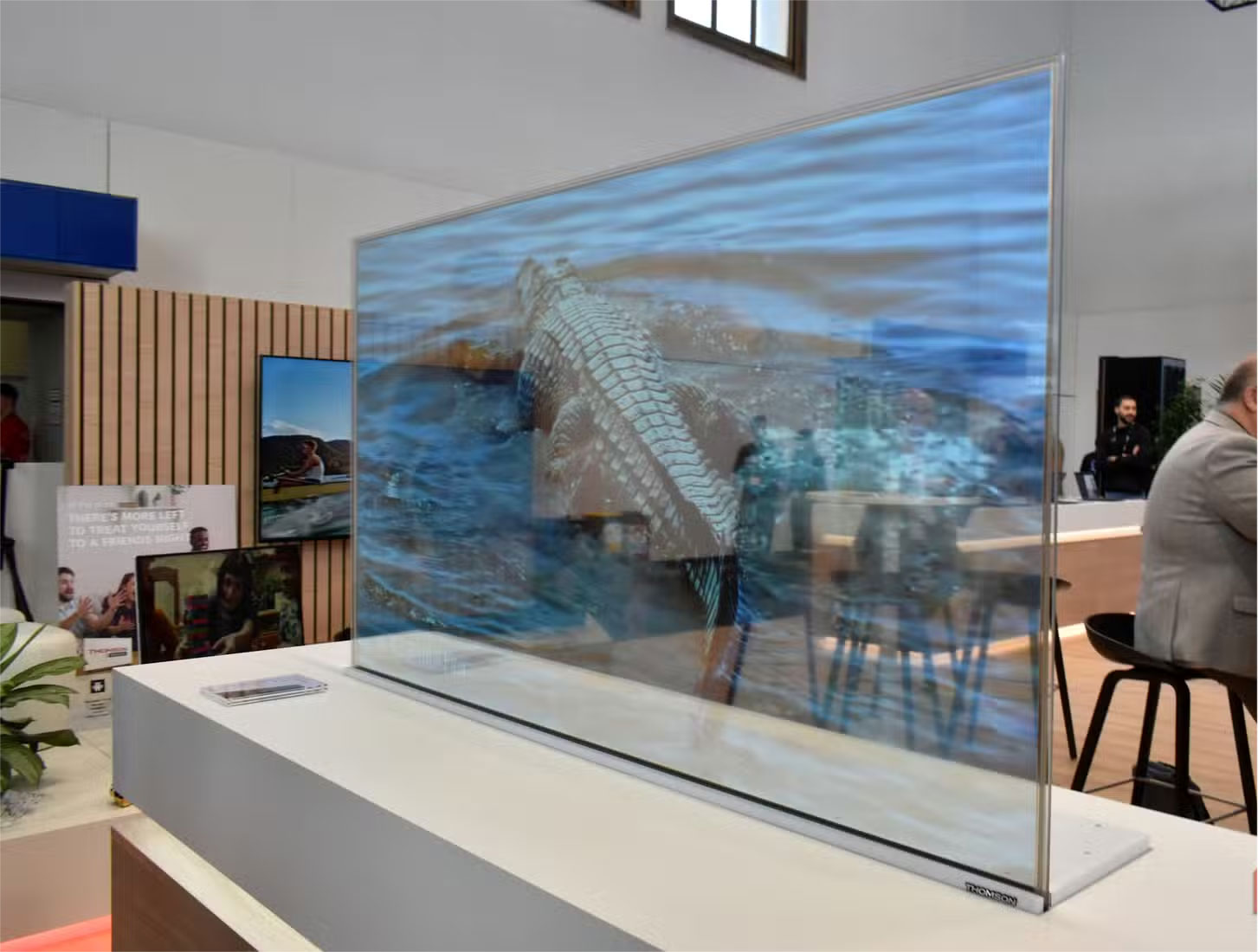Why spend extra money on an OLED display?
Your computer monitor is your window into everything your PC does. Spending a little extra on an OLED display to make sure you get the most out of your device may seem unnecessary, but it's actually worth it.
5. Deeper blacks for more vivid images

One of the biggest advantages of OLED displays is that they are self-emissive. This means that individual pixels can be turned off, creating 'true black'. Deeper blacks give you more vibrant images.
On an LCD or LED display , black is displayed in the same way as any other color, meaning the display's backlight remains on. This results in a phenomenon known as "backlight bleeding," where the resulting blacks are not as dark as intended. This affects the overall quality and saturation of the image.
On OLED displays, however, when a region of the screen or even an individual pixel needs to go black, the display panel turns off those specific pixels. The result is virtually no backlight bleeding; the rest of the colors on the screen are also unaffected.
OLED isn't just great at blacks. Almost every color on an OLED display is more saturated than on an LED or LCD display, resulting in a more beautiful, true-to-life picture.
4. True color from every angle

Another big advantage of OLED displays is viewing angle. Unlike traditional LCD or LED panels, OLED displays have a much wider viewing angle, ensuring you don't experience any color banding or color shift issues when you're not sitting at the optimal angle facing the screen.
OLED panels maintain much better color consistency than LCD or LED panels. Of course, you'll never get 100% accurate color from every possible angle, but you can get viewing angles as wide as 170 degrees on most good OLED displays.
This is most noticeable on PC monitors when you're sitting close to them. If you have a 24-inch or larger monitor, especially a curved one, any slight deviation in angle can cause image quality to degrade. If you're playing a game with a lot of dark areas, this can have a huge impact on your ability to see the game clearly and your overall experience, no matter what you're doing.
3. Better battery life in Dark Mode
The ability to completely turn off the pixels of an OLED panel is also great for battery life, especially if you use the operating system in Dark Mode. Since most of the UI elements on the screen in Dark Mode will turn off the pixels or reduce their brightness, the overall power consumption of the display will be significantly reduced.
Since operating system components are what you look at the most, you can expect increased battery life with Dark Mode, no matter what operating system you're using. For best results, use Dark Mode across all your apps and browsers.
Additionally, OLED displays display better contrast at lower brightness levels, meaning you won't have to crank up the brightness as much during everyday use. Over time, this also has a positive impact on battery life. It also helps reduce image retention on OLED displays.
2. Smoother motion in fast scenes

OLED displays tend to have the lowest response times and the fastest refresh rates. This means you'll get much smoother motion in fast-paced games or scenes, and is a must-have if you're into competitive gaming or just want to upgrade your gaming experience. 60 FPS is no longer enough.
Additionally, OLED displays (mostly TVs) have motion smoothing features that can help make fast-paced scenes or games look less jerky. If you're playing on a console and want to buy a TV or monitor, these features can be useful for a smoother gaming experience.
The benefits of smoother motion aren't limited to games, however. Other types of content like sports or movies benefit from this too.
1. Thinner, more flexible design

Last but not least, OLED panels are thinner than the LCD or LED panels you see on the market. So whether you buy a TV or monitor, you're getting thinner bezels and a better design. Depending on the type of OLED display you buy, this can have a huge impact on your viewing and user experience.
On laptops, smaller bezels mean you get a larger screen in a smaller device. The same goes for monitors and TVs, with slim designs looking better on a desk or wall. Buying the right OLED display can be tricky, but there are a few tips to help you choose the right one.
OLED displays may cost you a little extra, but with all the advantages they offer and the level of picture upgrade they provide, the extra money may be worth it.
You should read it
- Samsung's new durable OLED screen passes the test of being hammered
- Should I buy a QLED, OLED or LED TV?
- LG opened the giant TV race at CES 2018 with an 8K 8-inch OLED display
- 6 best OLED laptops 2023
- Asus Zenbook OLED - The Top Laptop Line from Asus
- What is MicroLED? What's different from OLED? How is the application?
- iPad Pro 2024 will have a high-end OLED screen and 4TB of internal memory
- Invite to see the giant curved screen made from LG's OLED TVs
May be interested
- How to use Money in Excel, a free and secure money management tool
 do you always ask yourself what you have spent, but the month has run out of money? or what to spend this month, how much is left over? or how much money do we spend on one card, and how much money does the other card have? understanding that, microsoft 365 launched money in excel, helping users manage spending from free and secure account cards.
do you always ask yourself what you have spent, but the month has run out of money? or what to spend this month, how much is left over? or how much money do we spend on one card, and how much money does the other card have? understanding that, microsoft 365 launched money in excel, helping users manage spending from free and secure account cards. - Samsung Galaxy S21 will likely use the Chinese manufacturer's OLED panel, no longer 120Hz
 some galaxy s21 models will feature oled panels manufactured by chinese company boe, instead of using samsung display's oled panels.
some galaxy s21 models will feature oled panels manufactured by chinese company boe, instead of using samsung display's oled panels. - 7 important lessons about money that every child needs to be taught
 knowing how to spend money, manage money and value the value of money is the basic lesson to help children grow and become more mature in everyday life. here are 7 important lessons about money that every child needs to be taught.
knowing how to spend money, manage money and value the value of money is the basic lesson to help children grow and become more mature in everyday life. here are 7 important lessons about money that every child needs to be taught. - What is Neo QLED? Is it better than QLED and OLED?
 neo qled is one of the latest display technologies for tvs. samsung has already adopted the technology in 2021 for its entire lineup of 4k and 8k tvs, promising a huge improvement in picture quality over traditional qled displays.
neo qled is one of the latest display technologies for tvs. samsung has already adopted the technology in 2021 for its entire lineup of 4k and 8k tvs, promising a huge improvement in picture quality over traditional qled displays. - Samsung will have laptops with OLED displays by the end of 2010
 with the advantages of slim, good display and less power consumption, oled displays are very suitable for laptops
with the advantages of slim, good display and less power consumption, oled displays are very suitable for laptops - 6 best OLED laptops 2023
 the best laptops have oled panels that use organic compounds to deliver stunning colors and deep blacks.
the best laptops have oled panels that use organic compounds to deliver stunning colors and deep blacks. - How to spend by successful people before the age of 30
 spend how to accumulate for the future and optimize current debt.
spend how to accumulate for the future and optimize current debt. - 4 golden rules ensure you never lack money
 family spending is always a headache for all of us. how to still have enough money for your daily life and still be able to save to buy a car, buy a house ... follow the four golden principles below to make sure you have enough money to spend in your home. family
family spending is always a headache for all of us. how to still have enough money for your daily life and still be able to save to buy a car, buy a house ... follow the four golden principles below to make sure you have enough money to spend in your home. family - How do the richest people in the world like Jeff Bezos 'spend money'?
 jeff bezos has to spend $ 88,000 to understand the suffering of a normal person when they spend ... $ 1.
jeff bezos has to spend $ 88,000 to understand the suffering of a normal person when they spend ... $ 1. - iPhone X is the best-screen smartphone, thanks to Samsung
 every new iphone comes with a promise of a display screen that is verified by an expert company, displaymate. and iphone x passed this test with satisfactory results.
every new iphone comes with a promise of a display screen that is verified by an expert company, displaymate. and iphone x passed this test with satisfactory results.










 4 favorite features on Samsung Smart TV
4 favorite features on Samsung Smart TV 6 Best TV Brands You Can Trust
6 Best TV Brands You Can Trust Alternative solutions when losing Smart TV remote control
Alternative solutions when losing Smart TV remote control Smart TV can replace these 5 gadgets!
Smart TV can replace these 5 gadgets! The Difference Between QLED, OLED and UHD
The Difference Between QLED, OLED and UHD Reasons to choose Android TV when buying Smart TV
Reasons to choose Android TV when buying Smart TV